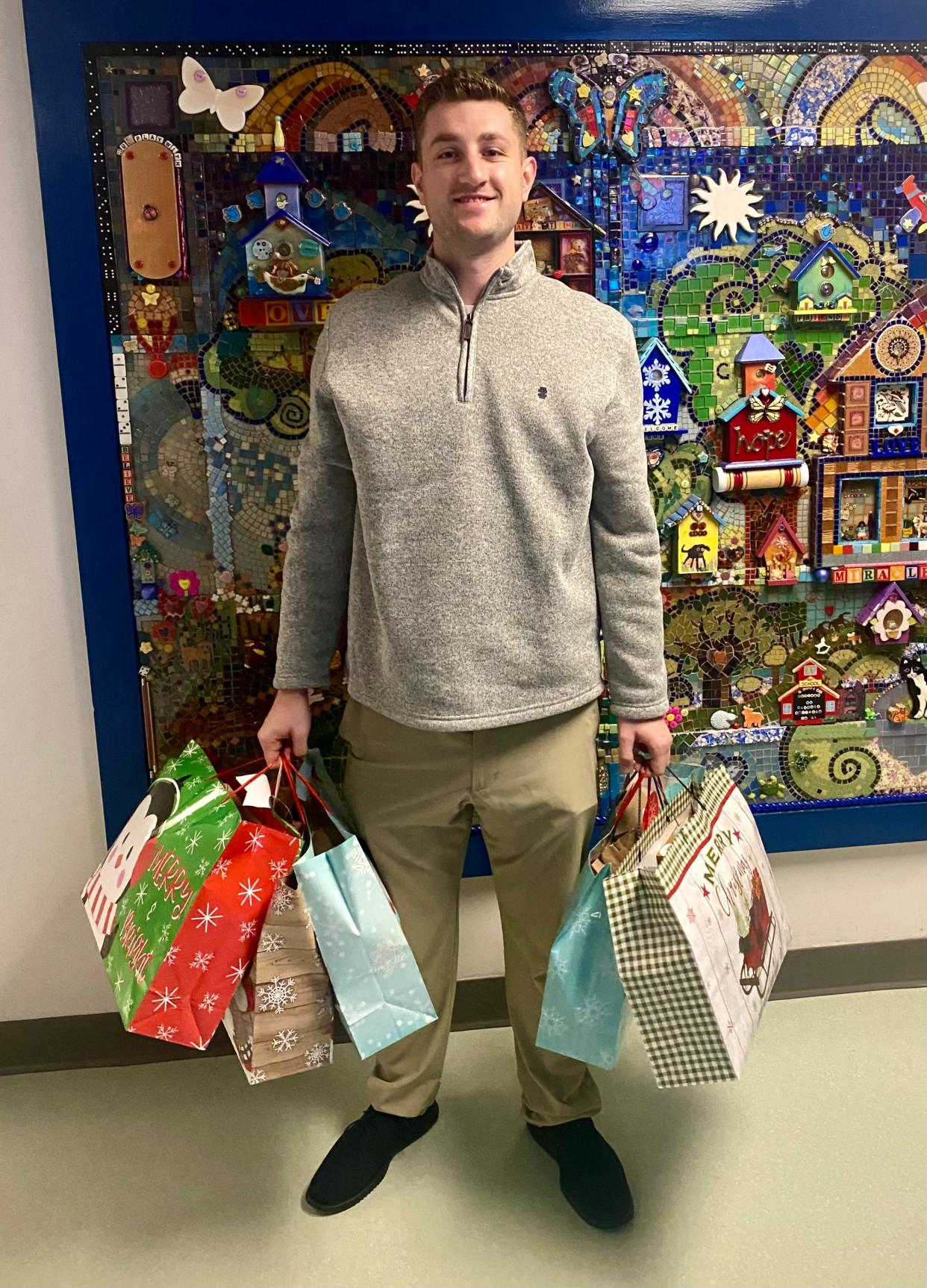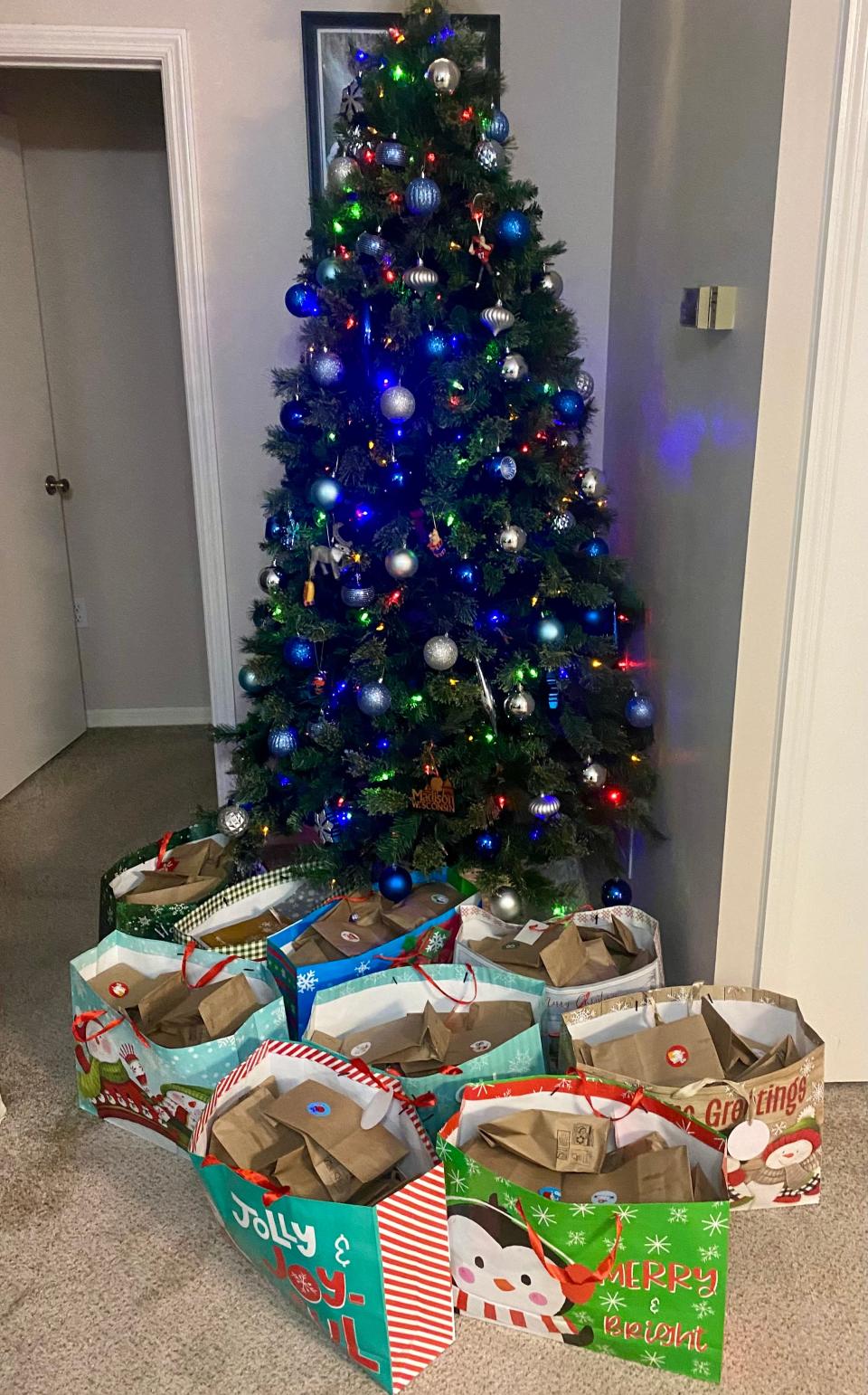Mark Woods: For student from Germany, Advent calendars more than a countdown to Christmas

Sven Kleinhans, a University of Florida law student, has been busy making dozens of Advent calendars, giving them to kids who are stuck in hospitals for the holidays.
These are not your childhood Advent calendars — or at least not my childhood Advent calendars.
When I was growing up, we opened the same Advent calendars every December. Our Advent calendars looked like, well, calendars. Flat, made out of paper, with an image of a Christmas scene, and 24 or 25 flaps. You opened one a day in December (even if that wasn’t necessarily the precise Advent), revealing a series of Bible verses.
“In those days a decree went out from Caesar Augustus …”
Even then, long before iPhones and the internet, we didn’t exactly get excited about opening paper doors for a very slow-motion reveal of a story where we already knew the ending.
So I was a bit surprised to read about how Advent calendars have become quite popular in recent years. But, again, I quickly realized these are not my childhood Advent calendars. For instance, there are Advent calendars with 24 days of German beers, 24 days of chocolates, 24 days of toy cars, and even — at a Mercedes-Benz six-story building in Munich — 24 days of actual cars.
“It has become a lot more commercialized,” Kleinhans said. “But back in the day, people focused on making them by hand.”
That’s what Kleinhans, 26, has been doing for several years, starting when he was going to graduate school and playing soccer at the University of Wisconsin, and continuing in Florida — initially in Gainesville, but adding hospitals in Orlando, Tampa and Jacksonville.
To make each Advent calendar, he fills 25 small bags with items, puts numbers on the bags, then puts all of them in a larger Christmas package.
At first, he bought everything himself. But in recent years, he has asked colleges and sports teams to help him out. He told them he didn’t want money. He wanted items for the bags.
This year the Jaguars gave him towels, T-shirts, mugs, sunglasses and duffel bags. The Tampa Bay Buccaneers gave him wristbands, pencils and stickers. The University of Florida gave him Gators socks and bracelets.
He also put in crayons, coloring books, UNO cards, a small plastic Christmas tree to put on a table in the hospital rooms and an ornament that says, “You got this.”
And while these kids have grown up in the age of iPhones and internet, he says they’re “super excited” to get the Advent calendars. He describes how during COVID, he couldn’t hand deliver them, but the parents sent him videos. The children always looked so happy. And the parents often were crying. He can relate to those emotions.
To understand why he started doing this, go back to his own childhood. And what his mother did for him.
'No matter how bad the situation'
He grew up in Ottersweier, Germany, a small town in the Black Forest region. His mother worked three jobs to support the family. His father, he says, was unemployed and abusive. When Sven was 16, his mother decided she couldn’t take any more. In the middle of the night, she told him and his two younger siblings they were leaving.
They grabbed whatever they could fit into backpacks and left by foot.
The next day his mother returned to the home to pack up the rest of their belongings, including Sven’s school books. His father had changed the locks. He never saw his books again. And he hasn’t talked to his father since the divorce.
His mother bought a used car for $600. And for most of that summer, their vehicle was their home. He remembers that when she was able to afford a place for them to live, they celebrated with four donuts and four cups of hot chocolate.
He also remembers what his mother did that December — and every December of his childhood, no matter how rough times were.
“She always made sure we had an Advent calendar,” he said. “Even if she just filled some of those bags with an orange or an apple, or some walnuts or pieces of chocolate. No matter how bad the situation was, no matter where we were, she always made sure we had something to look forward to every morning in December.”
He says that after his dad basically disappeared, he had to become almost a second parent to his younger siblings. But once they got a little older and his mother found love and stability with the man who’s now his stepfather, he decided he wanted a fresh start.
That’s when he came to America for the opportunity to combine higher education and soccer. In Germany, at a certain point, it’s one or the other. He’s a goalkeeper. And he ended up at Bluefield College, a Baptist liberal arts college in Virginia. He earned two bachelor’s degrees in three years — in exercise sports science and criminal justice — before using his final year of sports eligibility to go to the University of Wisconsin and get a graduate degree in education.
He told some of his story when he graduated from Wisconsin. He was chosen to be the student speaker for commencement.

In his speech, he talked about how we often want to create these grand legacies that everyone remembers — like athletes setting records on the field — but what truly matters are the much simpler, more personal legacies. The kindness and support that help us make it through good and bad times.
He says that by coming to America, he has had opportunities that he wouldn't have had at home. So he wanted to give something back to the communities he has been a part of.
“I was looking for something that is meaningful to me, that has some sort of history with my background,” he said.
And that's when it hit him.
Advent calendars.
A German tradition
It’s not just his personal connection. It’s the German one. Advent calendars can be traced back to 19th century Germany, with families ticking off the days with chalk marks on walls or the lighting of candles. And German publisher Gerhard Lang often is credited with inventing the first printed Advent calendar, inspired by his own childhood memories — of his mother sewing 24 cookies on the lid of a box and allowing him to eat one each day.
In the United States, Advent calendars took off after World War II — particularly after a photo of President Dwight Eisenhower’s grandchildren opening an Advent calendar ran in newspapers in 1953.
Seventy years later, Advent calendars have evolved into something quite different. There even are digital advent calendars. But it’s not the same as having something physical to open. And Kleinhans believes that there’s still something to be said for handmade Advent calendars, like what his mother used to make for him and his siblings in Germany — and what he now makes for children in hospitals in America.
“I think it's not necessarily what's in the bag that really excites the kids,” Kleinhans said. “It's more the fact that somebody took the time to put it together for them.”
mwoods@jacksonville.com, (904) 359-4212
This article originally appeared on Florida Times-Union: Why UF law student makes Advent calendars for kids in hospitals

